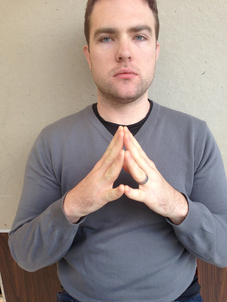Negotiating for a salary or promotion can be one of the most stressful parts of a career! However, it is essential you know how to ask for what you deserve.
Body language can give you an added edge when thinking about approaching your boss to negotiate for a salary raise or promotion. These tips will also help you as you start a job and want to ask for a higher starting salary.
Negotiation expert Jim Hopkinson and I have partnered up on this project to bring you the best body language tips and negotiating tricks combined.
I. Preparing to Ask for a Raise
Jim advises everyone to prepare for a few items you need to do before you ask for your raise or promotion.
1) Make sure you've been keeping track of your accomplishments on the job and wherever possible, convert those into a dollar figure that has made or saved the company money.
2) Jim says it is important to know what your value is on the marketplace. Do your online research so you know what others at your position are making.
3) Maybe most importantly, Jim believes it is important to have the right mindset. This is a business decision. You're not demanding a raise, you're not begging for a raise, you're not giving an ultimatum. You're going to confidently present facts as to why you deserve an increase.
4) You also want to prepare nonverbally for the pitch. If you walk into your boss' office angry or you're incredibly anxious about asking for the raise, it's going to show, and people will pick up on it. There was an amazing study done by researchers at Harvard Business School and they had participants come into a lab and split them up into two groups. In one group they had them do successful body language -- these are expansive poses, taking up space, hands on hips and they had them do these poses for five minutes. In the other group they had them do unsuccessful body language or defeated body language poses, these are contracted, tightly held arms and legs and low hanging heads also for five minutes. They then had these groups go into mock interviews where they had to deliver a speech to evaluators and answer questions. These were videotaped and rated for overall performance, hireability, and presentation quality.
Can you believe that the group that stood in the power poses were rated higher for their speech and were more likely to be hired? Just standing in successful body language for five minutes before an interview effected the outcome of the interview. So before an interview stand in expansive poses, hands on hips, feet firmly planted to get yourself psyched up.
II. Starting the Meeting
Once you are pumped up and ready to walk into your boss' office, there are a few body language secrets to get things off on the right foot. Up to 93 percent of our communication is nonverbal. So how you say something can matter even more than what you say. Some easy things to do:
1) Studies show that people who carry more than one item are seen as irresponsible or lazy. So leave your coat with the receptionist, leave your lunch in the car. Combine your purse and briefcase. Right off the bat this will make you look put together.
2) Sit at an angle. Studies show that when we sit directly across from someone there is higher rejection, less recall of what is said and people speak in shorter sentences. So angle your chair or take a seat at angle if you have a choice when you walk into the office.
3) Always keep your hands above the table, if they are hidden, people have trouble trusting you. Our brain loves to see the hands, it helps us make sure we can believe you. Don't put them in your lap or hide them behind your arms or under your chair.
4) Jim advises that you want to know your boss' style, and match your approach to theirs. For example, if they're a big-picture strategy person, talk about the biggest problem your company is facing, and how you plan to solve it. If they're a bottom-line, numbers-oriented boss, be ready with details to back your case, such as "Since I've been online marketing director, our page views are up 37 percent and we've signed nine new advertisers, leading to a $210,000 increase to the bottom line."
III. The Ask
Now you're ready for the ask.
1. Jim says a simple way to present your case is by thinking past, present, future. Here's what I've done over the past year, showing a proven track record of performance. Here are the projects I'm working on now -- he recommends attaching yourself to high-profile projects, even if you have to volunteer for them -- and here are my goals for the future, and how they align with company goals.
2. Body language can also make sure your boss is receiving your message. You want to look for positive body language cues that signal positivity or excitement:
- Nodding
- Licking Lips
- Steepling (when people touch the tips of their fingers together.)
3. If your boss gets defensive, you might see that they are using blocking behavior (like crossed arms or putting things in front of them), so a great way to handle that is to hand them something to hold. Sales people often do this with a pen or a calculator.
4. Jim recommends preparing a portfolio of your work which you can hand them to get them into open body language. He says people can tell a story of their accomplishments and be memorable on interviews by creating a digital portfolio of their work. He actually include some pre-made templates in his course.
If you see some doubt or crossed arms, this is a great time to hand over your iPad or portfolio and walk them through what you have done.
IV. Closing
Before going in for the final closing you want to build rapport.
1. The best way to do connect is to mirror both verbally/vocally and nonverbally. This is going to help them feel that they are on the same side as you.
2. Jim recommends closing up by presenting your case, reiterating the accomplishments you've had over the past year, your research on the current market range.
3. I also advice leaning in when you are making your strong points. This is like a nonverbal exclamation point. Don't lean back that shows your nerves or disengagement.
We hoped you liked these quick negotiation and body language tips. If you want to delve deeper into negotiation or body language we are offering both of our courses, The Secrets of Body Language and How to Negotiate for a Raise or Promotion at 70% off when you buy them together!

